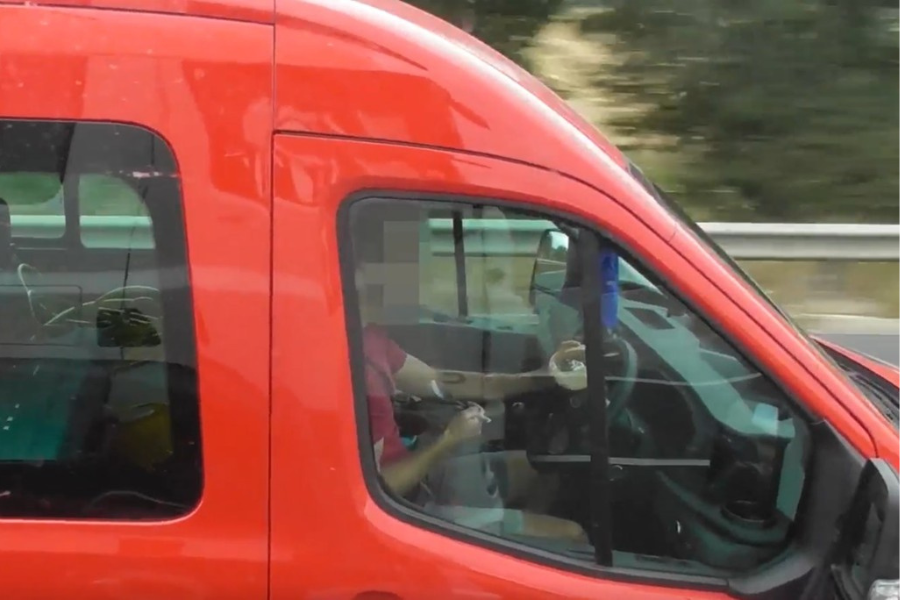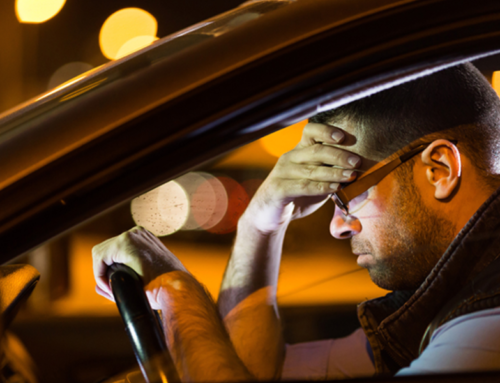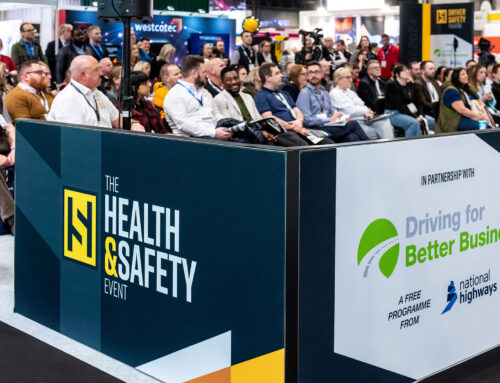Operation Tramline – 10 years tackling dangerous driving behaviours
Ten years ago, National Highways’ first unmarked HGV cab went out on patrol with the police, in an innovative trial to find new ways to deter unsafe driving – and Operation Tramline was born. Over that time:
- 51,500 offences have been spotted by police officers in National Highways’ unmarked HGV cabs
- Shocking unsafe driving incidents include playing with a Rubik’s Cube at the wheel, eating meals and applying make-up
- People not wearing seatbelts or using a mobile phone top the list of offences recorded
Since that first patrol, more than 51,500 offences have been recorded, by officers from 35 different police forces, patrolling across the country in an Operation Tramline cab.
To mark the safety campaign’s 10th anniversary, National Highways has released a video of 10 shocking incidents captured by officers using the cabs.
How confident are you that your drivers are not featured?
Watch the Video
Where is Operation Tramline taking place?
There are now three unmarked HGVs available to police partners, tackling dangerous driving behaviours. They can take advantage of the elevated position to see into cars and vans or across into lorries, with the aim of reducing the number of people killed or seriously injured on our roads. Fleet Operators and Transport Managers can find out where the National Highways cabs are each week on the National Highways Operation Tramline information page.
Some of the offences witnessed in Operation Tramline have included:
- A driver eating a bowl of cereal at the wheel in North Yorkshire, and someone tucking into lasagne with a knife and fork while driving
- A woman driver applying her makeup while travelling along the M40 in the Midlands
- A driver steering a vehicle transporter with just his elbows along the M40 in Warwickshire
- Drivers using two mobile phones at a time – one who was placing an online order with a phone in one hand and holding their credit card in the other
- A driver playing with a Rubik’s Cube while manoeuvring through M25 traffic
- Hampshire Police witnessing three HGV drivers from the same company using their phones while driving, during a week of activity.
Driver Distraction & seatbelts – key factor in collisions
The most common offences recorded over the last decade are not wearing a seatbelt (14,861) and using a mobile phone (13,553). Together these offences make up over half (54%) of the total number of offences recorded by police between 2015 and 2024.
National Highways Director of Road Safety, Sheena Hague, said: “We know that driver distraction, such as using a mobile phone, and not wearing a seatbelt are key factors in collisions which result in people being seriously injured or killed on our roads.
“Our goal through Operation Tramline has always been to remind motorists to think carefully about their driving behaviours behind the wheel. The choices people make can have such a devastating and far reaching impact on people’s lives.
“It is disappointing that there are still a minority of people who continue to put themselves and others at risk, and we will continue working with the police through Operation Tramline and other campaigns to deter unsafe driving.”
Future of Roads Minister, Lilian Greenwood said: “Dangerous driving puts everyone on our roads in danger, and Operation Tramline plays a vital role in tackling this issue.”
“While our roads are among the safest in the world, we are committed to improving road safety, and our recent Click! THINK! Campaign, which specifically targets young men, reminds drivers and passengers to wear their seatbelts at all times.”
Your drivers – your responsibilities
Sgt Dan Pascoe who is now in charge of the operation for both Surrey and Sussex police forces says:
“The truck gives us an invaluable observation point. Vehicles have been getting progressively higher over the years, but this cab is a golden ticket enabling us to see over into pretty much every vehicle.”
The initial focus of the campaign was spotting people on their phones although police forces look for all offences now. Sgt Pascoe believes the campaign has helped reduce the number of people using their mobile phones.
“Drivers of cars, vans and pick-ups are where the numbers are highest. It’s not as high as it used to be but we haven’t got to the point yet where it is seen as socially unacceptable.
“I believe we are making a difference with Operation Tramline. How do you measure how many collisions you have prevented?
We can’t – but you are four more times more likely to die in a crash if you are on your phone, so for every 100 distracted drivers we have stopped, we could have prevented 25 collisions.”
How clear are your driver policies on wearing seat belts and using mobile phones? Do you make it clear your drivers should not eat at the same time as driving for work, for example?
Is your Driving for Work Policy good enough?
DfT road casualty statistics show that, based on data for 2018 to 2022, 24% of car occupant fatalities were not wearing a seatbelt.
Motorists are also four times more like to be in a crash if using a mobile phone while driving. Do you have a company driving for work policy that covers mobile phone use – and do you cover hands-free phones?
Operation Tramline continues to highlight dangerous driving behaviours – it’s food for thought when you’re thinking about your own drivers and their wellbeing and safety, as well as that of other road users. Everyone deserves to get home safe and well.






